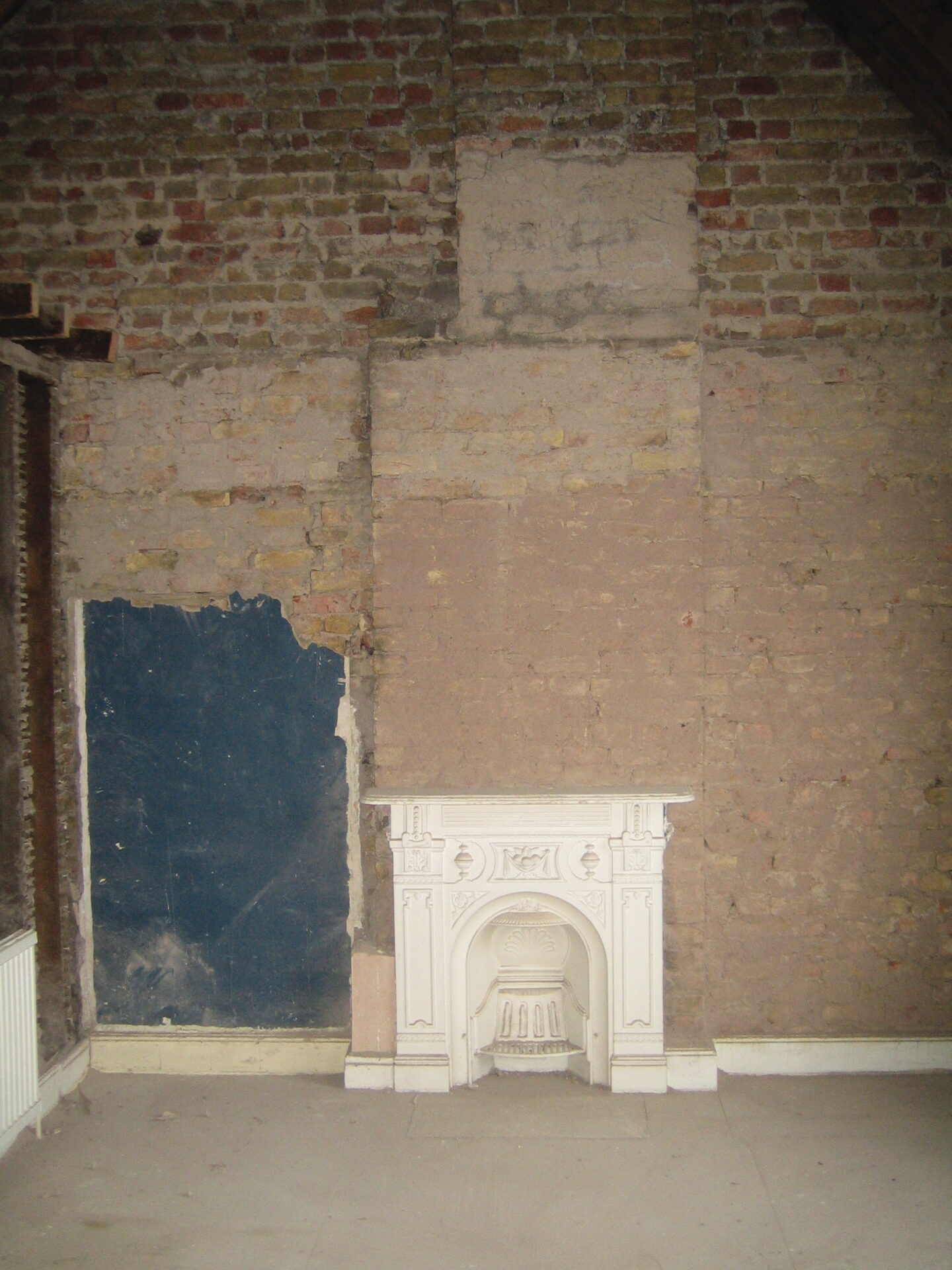
The room itself
For more than a century this room was one end of a windowless loft. I came here in 1990, and lived and worked and wrote three novels in the rooms underneath it, hardly ever thinking of the high dark space in the roof; just once in a while I would get out the step-ladder, push up the heavy trapdoor, find the switch that lit up the one bare bulb, and either slide in or drag out a winebox of old papers or a rarely used suitcase. Then one summer I went away for six months, the roof came off the house, and steel beams were hoisted and welded into place to secure the structure of a newly conjured set of rooms. Sometimes when I sit at my desk here I try to remember the space as it was, but it remains as notional to me now as it was before, an undescribed chaos forgotten in the subsequent semblance of order.
The room itself is twice the size of my old study downstairs, but certain things give continuity. The Government surplus desk was a present from my parents when I started at Oxford, and perhaps encodes the feelings of a couple who didn’t go to university about a son who was soon to do so. It was a work-place for me when I was at home, in the immense vacations which at Oxford took up more than half the year. A decade later I carted it off to London. It’s a desk for a clerk or official, drawers either side, GR stamped on the locks, and a dull green leather top. Never beautiful, now scuffed and bleached by house-moves and daily use, it still has about it a mood of office life, a residual suggestion of routine.
The main thing the new study shares with the old one is a view over Hampstead Heath. There’s an interesting path running steeply downhill outside, and I’ve put the desk far enough back from the window to avoid distractions. In summer an ancient horse-chestnut and a huge black poplar form a wall of green; in winter their branches combine to make a sort of climbing-frame for thoughts. I’m ten feet higher up now than I was before, but the trees have grown too, and of course keep growing.
In the room itself, white-painted bookshelves cover most of the walls, but there’s space for a signed photograph of Ronald Firbank, and a lithograph of Henry James by William Rothenstein. Firbank never settled anywhere long enough to have a study of his own, but Henry James emphatically did. There’s a subtle but unignorable sense in the portrait that he’s had to take time off from work to sit for it. Bearded and balding, in a strong, focused profile, he gives me an effective reminder, each morning, of the need to get back to the desk.
Alan Hollinghurst’s sixth novel, The Sparsholt Affair, was published in 2017.